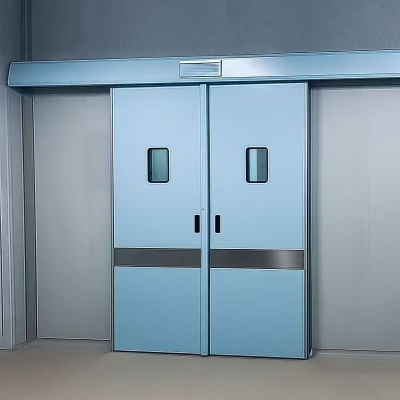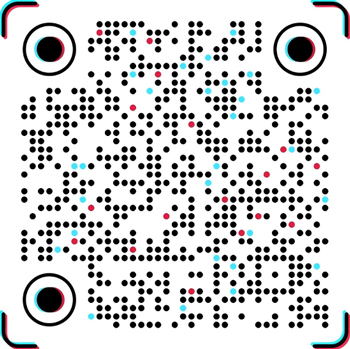Swing vs. Sliding Lead Doors: Which is Right for Your X-Ray Room?
Swing vs. Sliding Lead Doors: Which is Right for Your X-Ray Room?
Introduction: A Critical Design Decision
Selecting the right door is a pivotal decision in designing a safe and efficient X-ray room. It's not merely an aesthetic choice; it directly impacts workflow, space utilization, and safety compliance. The two primary options—swing and sliding—each offer distinct advantages and limitations. Understanding the difference is crucial for making an informed investment in your radiation shielding.
This comprehensive guide will compare Swing vs. Sliding Lead Doors across three key dimensions: Space and Layout, Functionality and Workflow, and Cost and Specifications. By the end, you'll know exactly which type of door aligns with your project's requirements, budget, and operational needs. We'll also explore how these choices affect lead lined door price, key lead lined door specifications, and what to look for in lead lined door manufacturers.
1. Space and Layout: Maximizing Your Floor Plan
The physical constraints of your room are often the deciding factor. The choice between swinging and sliding Lead Lined Doors fundamentally changes how space is used.
The Space-Saving Advantage of Sliding Doors
Sliding doors, also known as sliding lead doors, are the undisputed champion for tight spaces. Instead of swinging in or out, they glide horizontally along a track mounted above the doorway.
Ideal For: Narrow corridors, small rooms, and areas where clearance in front of the door is limited.
Benefit: They require zero floor space for operation, allowing you to place equipment or furniture close to the doorway. This makes them a preferred choice for compact CT suites or rooms where the entrance is at the end of a hallway.
Consideration: Sliding doors require empty wall space on one or both sides of the opening to "park" when open. A bi-parting sliding door, which splits and opens from the center, is excellent for wider openings and requires wall space on both sides. Reputable lead lined door manufacturers can advise on the best track system for your wall type.
When a Swing Door Makes Sense
Swing doors operate on hinges and require a clear arc of space to open and close.
Ideal For: Larger rooms with ample clearance, standard diagnostic X-ray rooms, and facilities where the doorway is not in a tight corridor.
Benefit: They offer a traditional, familiar operation and can be specified to open in or out (or both, as double-action doors) based on safety and workflow needs. For instance, a door that swings out of the room is often mandated for safety reasons in case of an emergency inside.
Consideration: You must ensure this arc remains unobstructed at all times. This can limit layout options near the entrance. The lead lined door specifications for swing doors must include heavy-duty, continuous-weld hinges capable of supporting the significant weight of the lead core.
2. Functionality, Workflow, and Safety Features
Beyond space, how the door integrates into your daily operations is critical for efficiency and safety.
Workflow Efficiency with Sliding Doors
For high-traffic areas or rooms frequently used for transporting patients on beds or stretchers, sliding doors are often superior.
Automation-Friendly: Sliding doors are exceptionally well-suited for full automation. Motion sensors or push-button controls allow for hands-free operation, which is invaluable when staff are maneuvering patient beds or carrying equipment. This seamless integration can significantly improve workflow.
Accessibility: They provide a clear, wide opening when retracted, meeting accessibility standards with ease. When evaluating lead lined door specifications, inquire about automated operator systems from your lead lined door manufacturers.
The Robust Simplicity of Swing Doors
Swing doors offer a different set of functional advantages.
Positive Sealing: A well-installed swing door typically provides excellent compression against the frame seals, ensuring a tight radiation barrier. The closing action naturally pushes the door against the seals.
Manual Reliability: While they can be automated, swing doors are inherently simpler to operate manually if needed. They are less dependent on a track system that, without proper maintenance, could potentially jam. The lead lined door price for a manual swing door is generally lower than for an automated sliding door, making it a cost-effective choice for less frequented rooms.
3. Cost, Specifications, and Long-Term Value
The initial purchase price is just one part of the equation. Considering long-term value and total cost of ownership is essential.
Understanding Lead Lined Door Price Factors
The lead lined door price is influenced by the type you choose.
Swing Doors: Generally, a basic manual swing door has a lower initial cost than a comparable sliding door. This is because the mechanism (heavy-duty hinges) is simpler than a track and trolley system.
Sliding Doors: The hardware for sliding doors is more complex, which often makes them more expensive upfront. However, when automation is desired, the cost difference between an automated swing door and an automated sliding door narrows significantly.
Decoding Lead Lined Door Specifications
The detailed lead lined door specifications will ultimately determine the performance, safety, and durability of your door, regardless of type.
Common Specs: Both types must meet critical specifications for lead equivalency (e.g., 1.5mm Pb, 2.0mm Pb), frame construction, surface finish (e.g., stainless steel), and the quality of radiation seals.
Type-Specific Specs:
For Swing Doors: Pay close attention to hinge ratings (number and type) and the automatic door closer specifications.
For Sliding Doors: Scrutinize the track material and load capacity, the trolley mechanism, and the specifications for the automatic operator if included.
The Role of Reputable Lead Lined Door Manufacturers
Your choice of lead lined door manufacturers is as important as your choice of door type. A reputable manufacturer will:
Provide Accurate Guidance: Help you choose the right type of door for your specific application, avoiding costly mistakes.
Ensure Quality Construction: Use high-quality materials and precision engineering to ensure the door functions safely and reliably for years.
Offer Clear Warranties: Stand behind their products with comprehensive warranties on both the door and the operating hardware.
Conclusion: Making the Right Choice for Your Facility
So, which is right for your X-ray room? Here’s a quick summary to guide your decision:
Choose a Sliding Lead Door if: Your priority is saving space in a narrow area, you need hands-free operation for high-traffic or patient transport workflows, and your budget allows for the potentially higher initial investment in hardware.
Choose a Swing Lead Door if: Your room has ample clearance, you prefer a cost-effective solution for a standard-traffic room, and you value the robust, positive seal of a hinged door.
Ultimately, the best choice depends on a careful evaluation of your space, workflow, and budget. The most critical step is to consult with experienced lead lined door manufacturers who can provide detailed lead lined door specifications and an accurate lead lined door price for both options tailored to your project.
Ready to determine the perfect door for your X-ray room? Contact our experts today for a free consultation and quote. We provide detailed specifications and competitive pricing for both high-quality swing and sliding lead doors, ensuring you find the ideal solution for your facility's needs.






